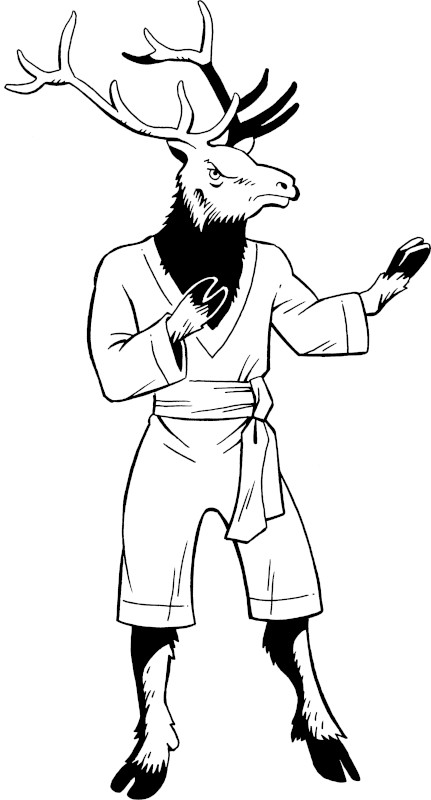If you're not familiar with the Shapeshifting RPG project, allow me to explain. I'm a big fan of computer-generated art, whether that's Harold Cohen's AARON project, or computer music, or even computer-written books.
OpenAI recently released a computer language model "GPT-2", trained on a big chunk of Internet text, which does a surprisingly solid job of generating prose passing for human-written. It still seems a little weird, but it does a subjectively better job of passing the Turing Test than, say, Weizenbaum's ELIZA.
To make it easier to interact with GPT-2, Adam King hosted a webpage https://talktotransformer.com/
which allows you to use pre-generated prompts or your own text and get a couple paragraphs of generated text.
Also, about this same time, the "Prismatic Corpse" game jam project drifted across my consciousness - people getting together to make an old-school RPG without working "together".
The ingredients were mise en placed, the table was set, it seemed like the only thing I could possibly do was to create my own RPG ruleset.

Where the AI totally wins is in generating lists of things. Hat tip to Janelle Shane, whose https://aiweirdness.com/ blog can consistently make me laugh out loud, with AI generated lists of things that begin on the weird side of plausible, and quickly descend into crazy-wrong space. So, I asked GPT-2 to make lists of monsters, and weapons, and armor, and NPCs. It loves lists. And a RPG rulebook is often a lot of pages of tables. Which are like lists.
To make my book borderline "useful", I decided to index my list of monsters, each with a 4-digit number from one to six. This gives you an easy way to roll up a foe to fight against, if you wanted to. Just roll 4d6, and look on the table for that die roll. So, all I had to do was to put a picture of four 6-sided dice in front of each element in my monster table.
I'm using Scribus to do the layout of my book, which is mostly doing what I need it to - it's WYSIWYG layout, without being a word processor, which is fine. It's even got the ability to run Python scripts, so you know I like that. I poked around a lot with trying to put an image inline into a bit of text, but it seems like Scribus prefers to have images exist outside of text flows, which is great if you want your paragraph text to flow around an image like this:
To be clear, I don't think that's how I want my text to flow, but it's super cool that Scribus makes it easy to do that. (And, somewhat amusingly, I had a hard time getting the image of the text flow to get placed where I want it in Blogger's layout. Layout is hard. Layout of images relative to text is doubly hard.)
What I ended up doing, which feels like failure, but it gets the job done, is to find a font that has the numbers 1-6 as the faces of dice, and then I add that to my list of monsters, like so:
It turns out, it wasn't completely that easy - what I ended up doing was writing one Python script to walk over a monsters.txt file that I had prepared, doing some light sanity checking and cleaning up (but, clearly, not fixing case-consistency; Ice-Eared Goblin should probably be all lower-case, like everything else). That script outputted a CSV with the indices in their own fields. Then, I had another Python script, this one inside Scribus, which pulled in the CSV and wrote out the text, one line at a time, but switching fonts along the way, switching to my dice font for the index, then switching back to the text font for the monster name. This is a surprisingly time-consuming script to run, taking several seconds to generate around 18 pages of monsters.
It works, it's sufficient for this project, but it feels like yet another hack along the same lines as hacks that I've done in game development to get, for example, the PlayStation "X" button to render as an image in a tutorial text display. This feels like it doesn't need to be this hard, especially with the Unicode Consortium spending time on frowning poop, and Apple bowing to user demands for shapely peach imagery.


No comments:
Post a Comment